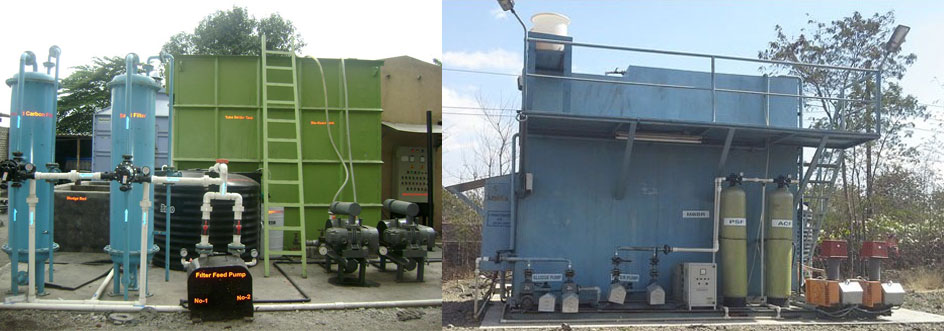Sewage treatment plant
Sewage treatment is the process of removing contaminants from wastewater, primarily from household sewage. Physical, chemical, and biological processes are used to remove contaminants and produce treated wastewater (or treated effluent) that is safer for the environment. A by-product of sewage treatment is usually a semi-solid waste or slurry, called sewage sludge. The sludge has to undergo further treatment before being suitable for disposal or application to land.
Sewage treatment may also be referred to as wastewater treatment. However, the latter is a broader term which can also refer to industrial wastewater. For most cities, the sewer system will also carry a proportion of industrial effluent to the sewage treatment plant which has usually received pre-treatment at the factories themselves to reduce the pollutant load. If the sewer system is a combined sewer then it will also carry urban runoff (stormwater) to the sewage treatment plant. Sewage water can travel towards treatment plants via piping and in a flow aided by gravity and pumps. The first part of filtration of sewage typically includes a bar screen to filter solids and large objects which are then collected in dumpsters and disposed of in landfills. Fat and grease is also removed before the primary treatment of sewage.
The features of wastewater treatment systems are determined by:
- The nature of the municipal and industrial wastes that are conveyed to them by the sewers.
- The amount of treatment required to keep the quality of the receiving streams and rivers.
Sewage treatment plant processes fall into two basic types:
-
Anaerobic Sewage Treatment
ewage is partly decomposed by anerobic bacteria in a tank without the introduction of air, containing oxygen. This leads to a reduction of Organic Matter into Methane, Hydrogen Sulphide, Carbon Dioxide etc. It is widely used to treat wastewater sludge and organic waste because it provides volume and mass reduction of the input material to a large extent.. The methane produced by large-scale municipal anerobic sludge treatment is currently being examined for use in homes and industry, for heating purposes. Septic tanks are an example of an anerobic process, but the amount of methane produced by a septic tank (it is only the SLUDGE at the bottom that produces methane) serving less than 100 people is miniscule. In addition to this, septic tank effluent still contains about 70% of the original pollutants and the process smells very badly, due to the Hydrogen Sulphide, if not vented correctly. The effluent produced by this process is highly polluting and cannot be discharged to any watercourse. It must be discharged into the Aerobic layer of the soil (within the top metre of the ground) for the aerobic soil bacteria to continue the sewage treatment via the aerobic process below. -
Aerobic Sewage Treatment
In this process, aerobic bacteria digest the pollutants. To establish an aerobic bacterial colony you must provide air for the bacteria to breathe. In a sewage treatment plant, air is continuously supplied to the Biozone either by direct Surface Aeration using Impellers propelled by pumps which whisk the surface of the liquid with air, or by Submerged Diffused Aeration using blowers for air supply through bubble diffusers at the bottom of the tank. (The most modern aerobic sewage systems use natural air currents and do not require electricity, though these are only used for small scale sewage systems at the moment. Once again, the general public leads the way!) Aerobic conditions lead to an aerobic bacterial colony being established. These achieve almost complete oxidation and digestion of organic matter and organic pollutants to Carbon Dioxide, Water and Nitrogen, thus eliminating the odour and pollution problem above. The effluent produced by this process is non-polluting and can be discharged to a watercourse

